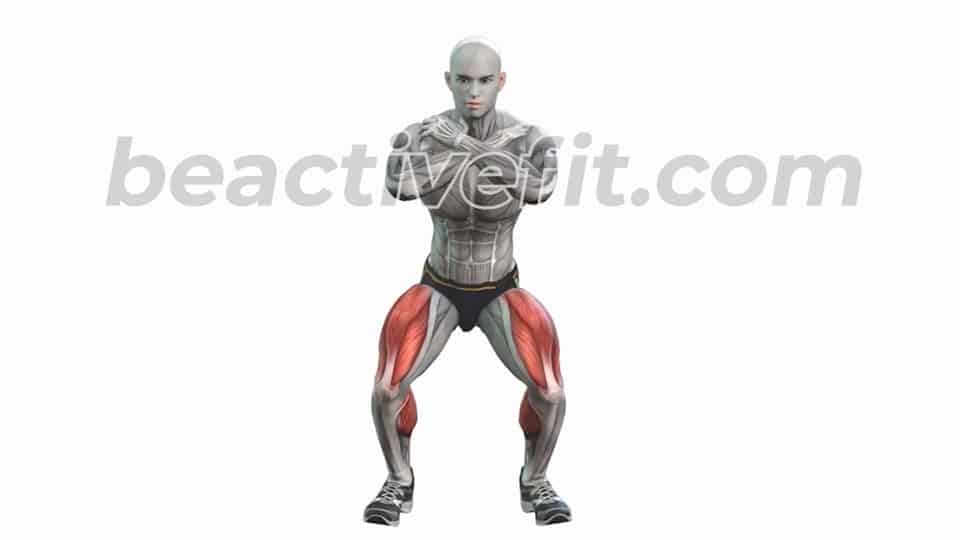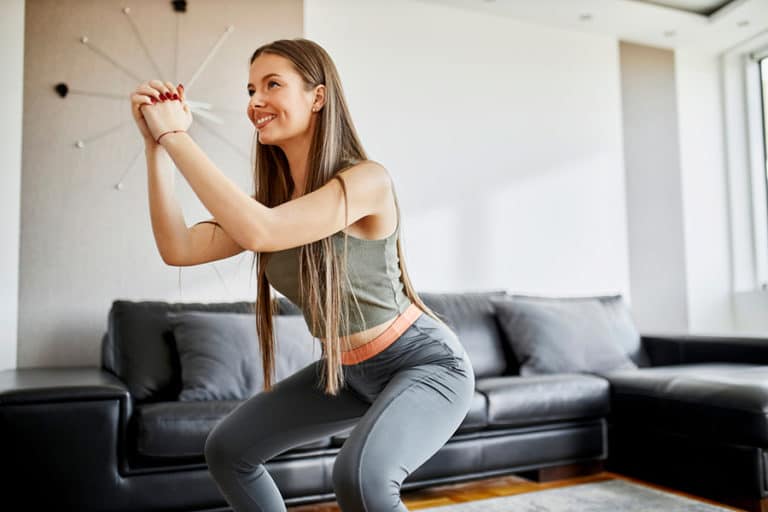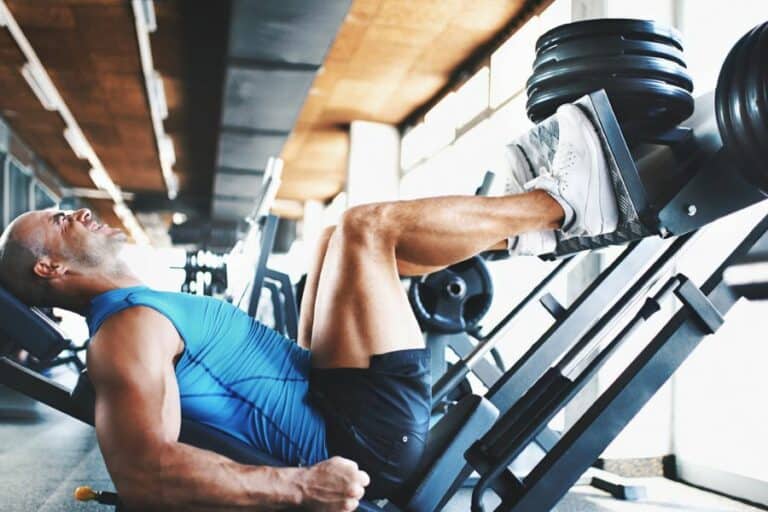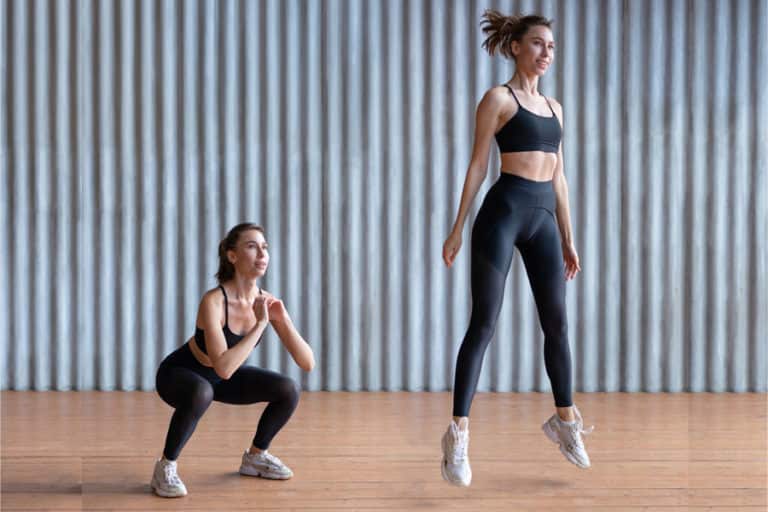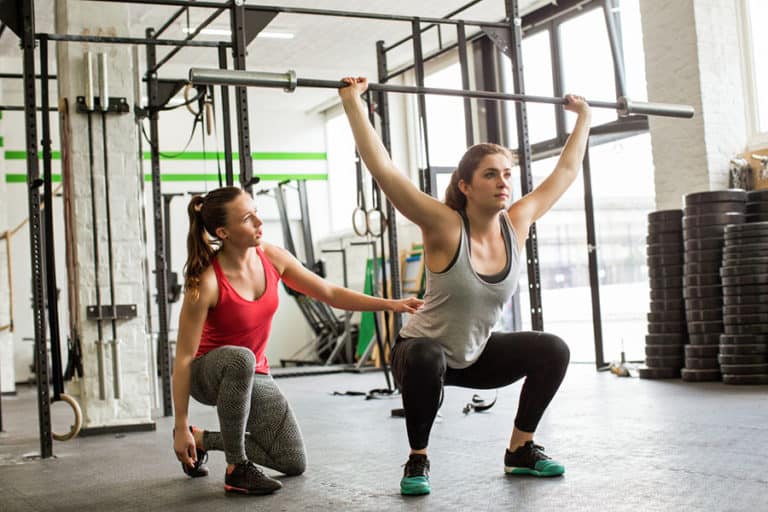What Muscles Do Squats Work?
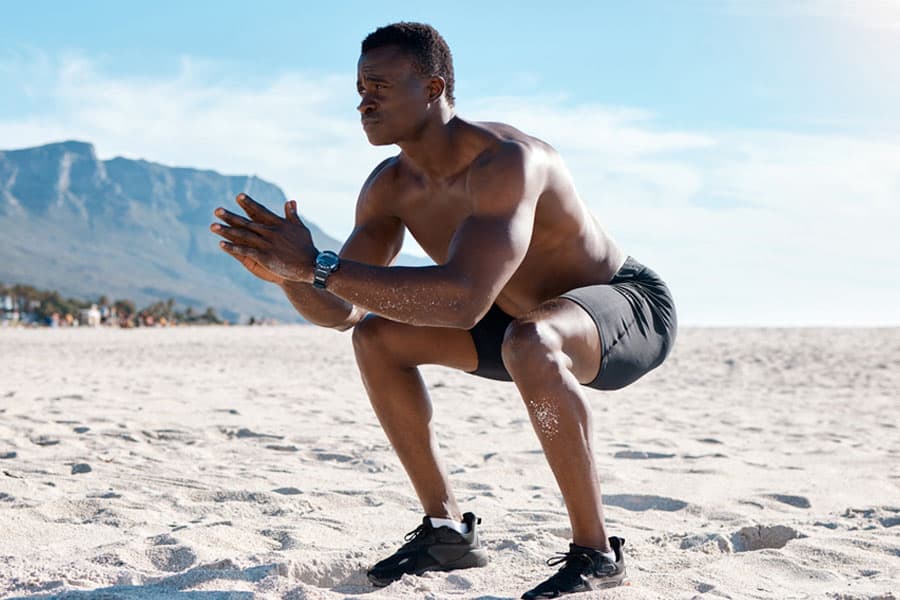
Muscles worked | How to do | Squat Variations | Safety tips
Squats are compound exercises that target multiple muscle groups simultaneously. They are part of almost every High-Intensity Interval Training (HIIT) program. Although squats predominantly work on the lower body, they can also be a great full-body workout suitable for people of all fitness levels.
What muscles do squats work?
Squats are a powerful workout that involves several muscle groups. Here are the different muscle groups squats primarily work:
1. Glutes
There are three gluteal muscles- gluteus maximus, medius, and minimus collectively known as glutes. When you squat, the gluteus maximus is primarily engaged, the largest muscle in your body. The gluteus medius and minimus contribute to stabilizing the pelvis and keeping the upper body straight when you squat.
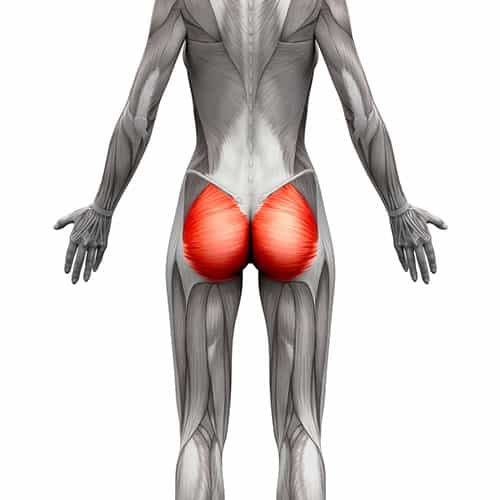
Squats to work your glutes:
Bodyweight squats work great on your glutes. However, the more weights you add, the better your glutes work. Here are some variations you can try to work on your glutes.
2. Quadriceps
The quadriceps are the strongest muscles in the human body, located on the front of the thigh. Quads are a group of four muscles- rectus femoris, vastus intermedius, vastus lateralis, and vastus medialis. Quads work in synergy with glutes to extend your knees and hip when you squat.

Squats to work your quadriceps:
Adding squats to target quad muscles can help improve the stability of your knees. There are different variations of squats you can try to target your front thighs.
- Goblet squats
- Front squats
- Bulgarian split squats
3. Hamstrings
The hamstrings are a group of three powerful muscles on the back of your thigh- semimembranosus, semitendinosus, and biceps femoris.
Hamstrings are also responsible for knee flexion. When you squat, the hamstrings work with the glutes to extend your hips.

Squats to work your hamstrings:
To target your hamstring muscles when you squat, try these variations.
- Box squats
- Back squats
- Sumo squats
- Cossack squat
- Kang squats
4. Calves
Calf muscles are a group of 2 muscles- gastrocnemius and soleus. The gastrocnemius is the larger muscle that covers the back of your leg. These two muscles come together and connect to the fibrous tissue achilles tendon.
The soleus is the smaller muscle that lies underneath the gastrocnemius. When you squat, both these muscles are engaged.
Calf muscles help you bend your foot downwards at the ankle, pointing your toes. Calves are not as active as glutes, quads, adductors, and hamstrings.
However, they provide additional power to your leg muscles during squatting.
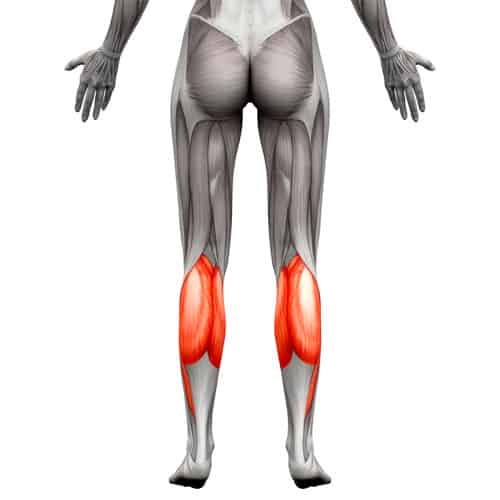
Squats to work your calves:
Here are some squat exercises you can add to your workout routine to target calves effectively.
- Air squats
- Jump squats
- Sumo squats
5. Hip adductors
Hip adductors are a group of five muscles, including adductor brevis, adductor longus, adductor mangus, pectineus, and gracilis. They are located in the inner thighs. When you squat, these muscles work together to pull your legs.
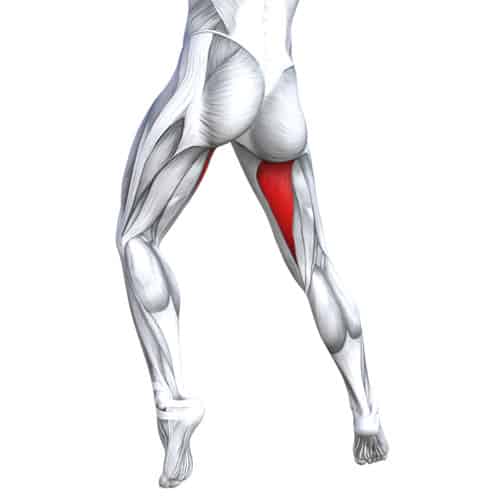
Squats to work your adductors:
Although standard squat exercises work on your adductors, you can try different variations to target them specially. Here are some exercises that work great for adductors.
- Dumbbell squats
- Barbell squats
- Cossack squats
- Sumo squats
- Bulgarian split squats
6. Hip flexors
The hip flexors are a group of muscles located in the front of your pelvis and upper thighs. These muscles include the iliopsoas and rectus femoris. The primary function of the hip flexors is to move your leg towards your upper body. When you squat, the hip flexor muscles pull your knees upwards.
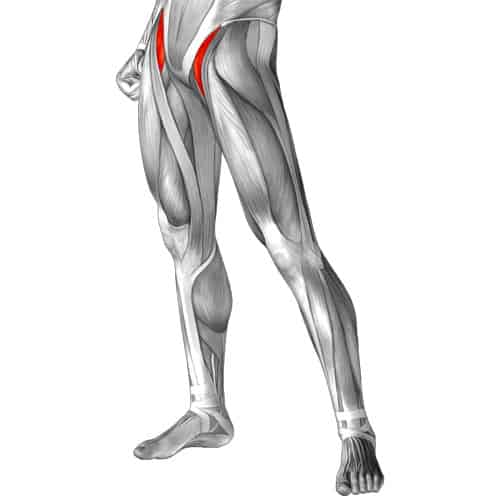
This helps to strengthen and tone your hip flexors [1]National Library of Medicine: The relationship between the deep squat movement and the hip, knee and ankle range of motion and muscle strength. Be it body weight squats or weighted squats, all squat variations activate hip flexors when you squat deep.
Can squats target upper body muscle groups?
Although the primary focus of squats is to target lower body muscles, they can also help to strengthen the upper body. When you squat, your upper body muscles, including your arms, shoulders, and back, stabilize your body. Different upper body muscle groups activate when you squat. Muscles worked in the lower body are as follows:
- Erector spinae [2]PubMed: Changing the stability conditions in a back squat: the effect on maximum load lifted and erector spinae muscle activity
- Abdominal core and oblique muscles
Erector spinae
The erector spinae is a group of muscles located along your spine. These muscles work together to stabilize and support your spine. When you squat, the erector spinae is engaged and works to stabilize your body.
Abdominal core
The abdominal core muscles [3]Harvard Health Publishing: Strengthening your core: Right and wrong ways to do lunges, squats, and planks, including the rectus abdominis, transverse abdominis, and internal and external obliques, work together to stabilize your body and protect your spine. When you squat, these muscles work to keep your body stable.
How to do squats correctly?
The correct squat form is essential to effectively target the muscles. Here are some tips to help you squat correctly:
- To maintain proper form, a squat position is necessary. Make sure your standing position is correct.
- Start with your feet shoulder-width apart and your toes pointing slightly forward.
- Engage your core muscles and keep your back straight.
- Bend your knees and lower your body down into a squatting position.
- Make sure your knees are pointing in the same direction as your toes.
5 squat variations for complete muscle workout
A squat movement is a functional exercise that works wonders for your entire body and not just a particular muscle group.
However, you need to perform the right squat to reap maximum benefits. The following are five different types of squat variations that you can try:
1. Air squat
An air squat is a basic bodyweight squat that effectively targets different muscle groups. This squatting position will help to work and tone your body. It is one of the popular strength training exercises you can add to your workout routine.
2. Barbell squat
The barbell squat is a compound exercise that works for multiple muscle groups in your body, including the quads, glutes, hamstrings, and lower back. This exercise is also known to improve core strength and stability.
3. Goblet Squat
The goblet squat is an excellent full-body exercise that will help you build muscle and improve your cardiovascular fitness. All the muscles in the body are engaged during this exercise, making it an excellent choice for beginners.
4. Bulgarian split squat
This squat movement builds muscles in the lower body, making it an excellent choice for those looking to build strength and muscle mass. This exercise is also great for building single-leg strength and stability.
5. Pistol squat
The pistol squat is an advanced bodyweight squat variation that effectively targets lower body and core muscles. Since it’s a single-leg exercise, it also helps to improve your range of motion and balance.
Safety tips
When performing squats, there is more than just proper squat form that matters. Safety precautions should be followed to avoid injuries. Here are some tips to consider:
- Warm-up: Light cardio and stretching help to avoid injury by preparing the body for the work ahead.
- Start with a traditional squat: This will help you get used to the movement and avoid putting too much strain on your body.
- Don’t hold your breath: This can cause strain on the body and lead to dizziness.
- Stop if you feel pain: Pain is a sign that something is wrong. If you feel pain, stop and consult a doctor.
- Use a squat rack: This will help keep the barbell in place and avoid injury.
- Gradually increase weight: As you get stronger, you can gradually increase your weight. This will help to avoid injury and allow you to progress at a safe pace.
Conclusion
Ultimately, squats effectively target your lower body muscles and engage your upper body muscles simultaneously. However, always talk to a certified trainer before you add advanced squats to your exercise routine. They can let you know which squat variation works best for you based on your fitness level.
References
| ↑1 | National Library of Medicine: The relationship between the deep squat movement and the hip, knee and ankle range of motion and muscle strength |
|---|---|
| ↑2 | PubMed: Changing the stability conditions in a back squat: the effect on maximum load lifted and erector spinae muscle activity |
| ↑3 | Harvard Health Publishing: Strengthening your core: Right and wrong ways to do lunges, squats, and planks |


